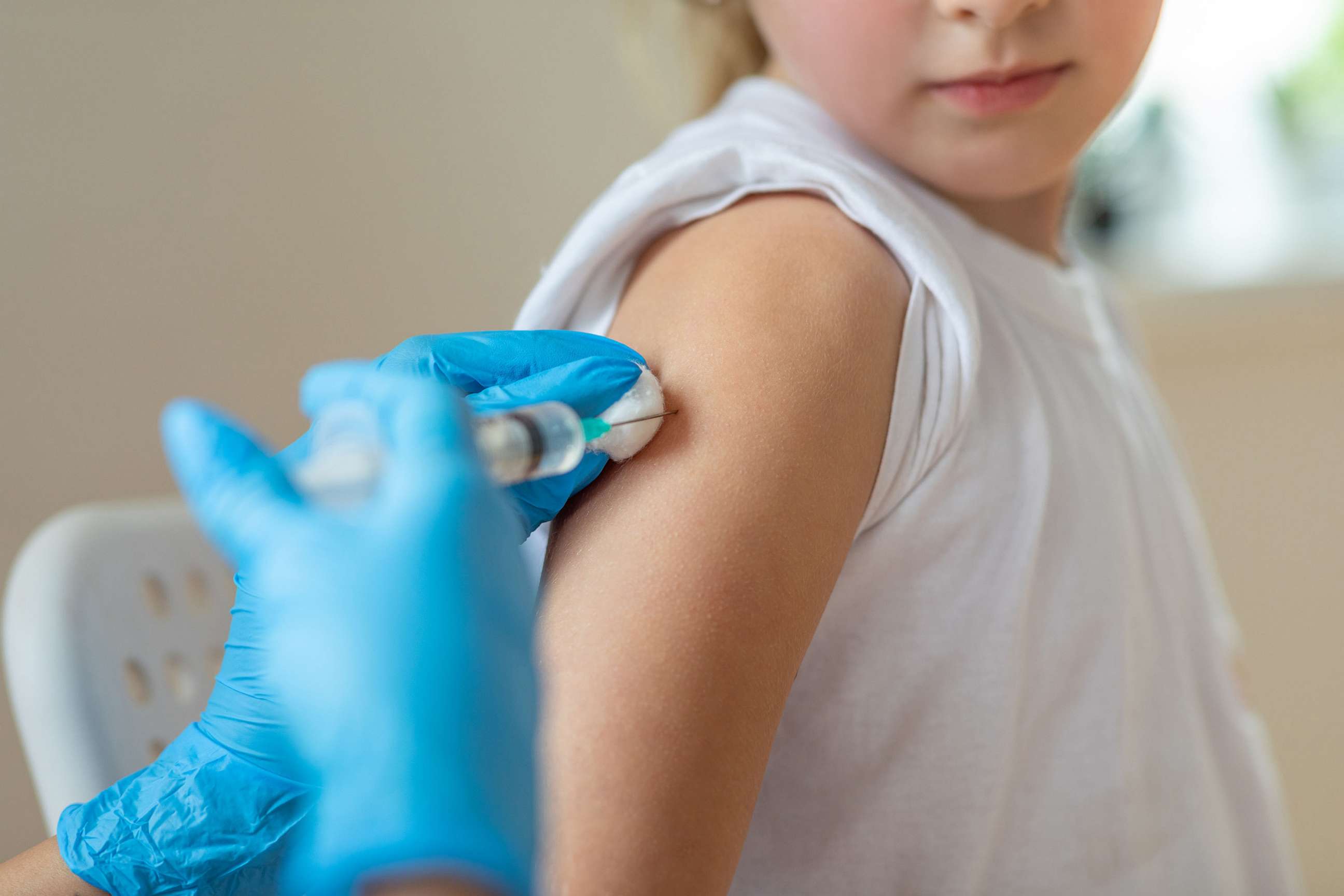Exemptions for routine childhood vaccination at highest level ever: CDC report
Vaccine exemptions reached 3% this year, the highest level ever seen.
Vaccination rates among U.S. kindergartners for routine childhood shots have still not returned to pre-pandemic levels, according to new federal data published Thursday.
Researchers from the Centers for Disease Control and Prevention (CDC) looked at how many children met school requirements for the measles, mumps and rubella (MMR) vaccine; the diphtheria, tetanus and acellular pertussis (DTaP) vaccine; the poliovirus (polio) vaccine; and the varicella (chickenpox) vaccine.
For the 2022-23 school year, about 93% of children in kindergarten had met the vaccination requirements. That's about the same number that was seen the previous school year, but lower than the 94% seen in 2020-21 and the 95% seen in 2019-20, prior to the COVID-19 pandemic. The latter percentage had been the standard for about 10 years.
"We're not surprised that there was a drop in vaccination over the pandemic; clearly there is some level of surprise that these numbers have not fully recovered," said Dr. John Brownstein, an epidemiologist and chief innovation officer at Boston Children's Hospital and an ABC News contributor. "We've known these challenges are because of care access and misinformation and, unfortunately, some of these challenges have persisted post-pandemic."
Data also showed that exceptions from school vaccination requirements increased to 3% during the 2022-23 school year. That's up from 2.6% the previous year and is the highest vaccination exemption rate ever reported in the U.S., according to the CDC.

Compared to the 2021-22 school year, vaccination coverage decreased the most for the DTaP vaccine, falling in 31 states for the 2022-23 school year, the report found. This was followed by declining coverage for the MMR vaccine in 29 states, the polio vaccine in 28 states, and for the chickenpox vaccine in 25 states, all over the same period.
Idaho had the lowest percentage of children who were up to date for all four vaccines during the 2022-23 school year, while Mississippi had the highest percentage of up-to-date children, the CDC report found.
Of the 3% of kindergartners with vaccine exemptions, 0.2% had a medical exemption and 2.8% had a non-medical exemption. The report found that exemptions increased in 40 states and the District of Columbia during the 2022-23 school year.
In total, 10 states reported an exemption for at least one vaccine for more than 5% of kindergartners. The percentage of those with exemptions ranged from less than 0.1% in West Virginia, to 12.1% in Idaho.
The authors said it's not clear whether the increase in exemptions is because there has been an increase in parents opposing routine childhood vaccines, or if they're opting for non-medical exemptions because they have barriers that make it difficult to vaccinate their children.
Brownstein said that it's likely a mix of both. When it comes to vaccine hesitancy, he said he believes the pandemic exacerbated misinformation, due to the politicization of the COVID-19 vaccine, which may have caused a decrease in confidence in vaccination overall.
He said one way to ease parents' concerns is to "[establish] relationships with trusted partners. A lot of that resides within the schools but also especially with medical professionals. There are pediatricians to help really educate families on the values of these vaccines."
Brownstein and the CDC report's authors noted that clusters of unvaccinated or under-vaccinated children can lead to outbreaks of preventable diseases.
In one case, between November 2022 and February 2023, a measles outbreak swept across several schools and day cares in central Ohio, infecting 85 children, 80 of whom were unvaccinated.

"Sometimes there's a lack of recognition of why we need a vaccine in the first place," Brownstein told ABC News. "The reason we don't see these [diseases] is because of vaccinations. There's a false narrative that these vaccines are not needed because we don't see these pathogens. We need these vaccines to not see these pathogens."
To help increase vaccination coverage, and increase access to vaccines, the authors recommended that schools and providers begin making sure students are vaccinated as early as possible, such as during the enrollment process that occurs months before the school year starts.
The authors also said provisional school enrollment periods, which allow students to attend classes while on a catch-up schedule, can help children stay up to date on their vaccines by allowing them time to complete their requirements.



